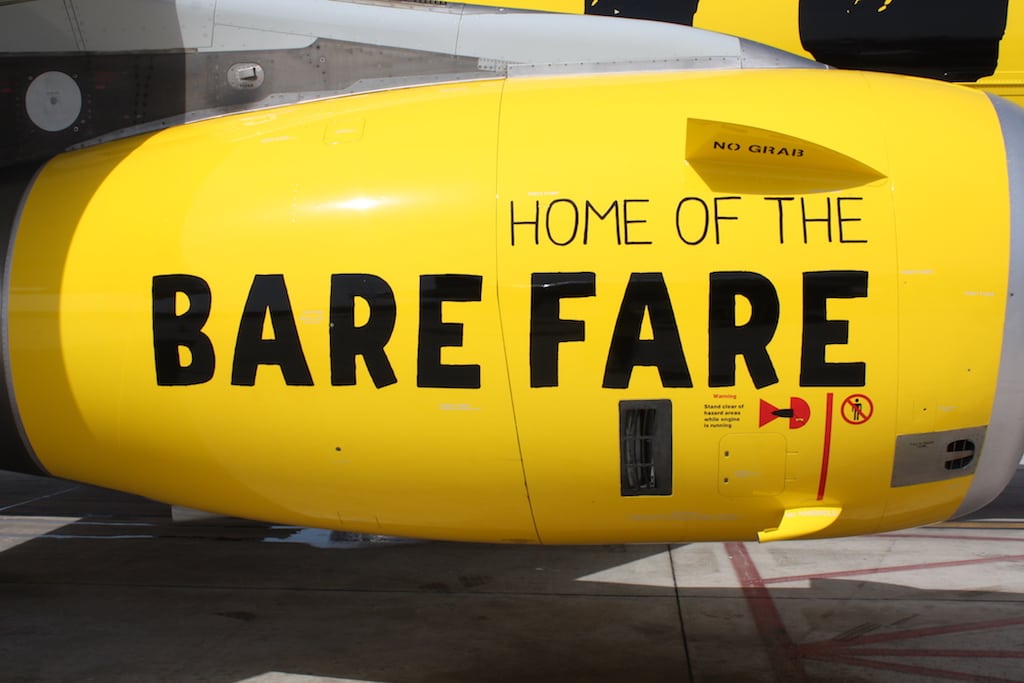Skift Take
Focusing on reliability and customer satisfaction is the right move for Spirit, provided it can do it without increasing costs significantly. The airline's brand is not in strong shape, and it needs to be rehabilitated.
Until recently, few airlines seemed to care so little about satisfying customers as Spirit Airlines. Its flights were on-time far less than the industry average, and passengers complained about Spirit considerably more than other carriers.
Previous management didn’t appear to mind. Spirit was almost always less expensive than the competition — often far cheaper — and enough customers kept returning for deals. But over time, legacy airlines started matching Spirit’s prices, or at least came close to them, and Spirit, while still profitable, began to stumble slightly. It began discounting significantly — even more than before — to fill planes.
It was at about this time, in early 2016, when Spirit replaced CEO Ben Baldanza with Bob Fornaro, former CEO of AirTran Airways. Fornaro promised to build a kinder, more gentle airline. It would still focus obsessively on costs, but it would be reliable and friendly — more like AirTran before Southwest Airlines acquired it in 2010. On Spirit, legroom remains tight, seats don’t recline, and passengers still pay for drinks and overhead bin space. But Fornaro has vowed that customers will have more pleasant interactions with ground staff and flight attendants, and has said the airline will be more reliable.
Fornaro is more than a year into his turnaround effort, and he told analysts Friday the carrier is making progress. Some numbers suggest he’s right. For February 2017, the U.S. Department of Transportation said it received 3.42 complaints per 100,000 Spirit passengers. That was still the second-highest rate in the U.S. industry — and ten times worse than Southwest Airlines — but it was far fewer than the 11.56 complaints per 100,000 passengers the government received about Spirit in February 2016.
Spirit isn’t tweaking its model because of altruism. Fornaro said he expects Spirit will make more money if it stops consistently irritating customers. He’s not the first CEO of a no-frills carrier to make this determination. Ryanair has been spending the past couple of years improving its product, and changing how it communicates with customers.
“There tend to be some benefits no matter where you are in the food chain to delivering a good product well in a city,” he said Friday on Spirit’s first quarter earnings call. “If you do that job well, the word gets around. You don’t do it well, [and] it can happen in reverse.”
On Friday, Fornaro updated investment analysts on some of the airline’s recent progress. Here are some highlights.
Service Training
Fornaro admitted that Spirit’s 2,500 flight attendants have never received any real service training. That’s will change, he said, though he said it may take a year and a half to train everyone. “That takes time,” he said. He promised staff will soon provide “friendly service” to customers.
Better on-time performance
In the first quarter, Fornaro said Spirit’s on-time rate was 75.5 percent, a rate that made it competitive, more or less, with other airlines. It was an increase of more than 10 percentage points compared to the first three months of 2016, when customers could hardly count on Spirit to deliver them promptly to their destinations.
Spirit wants to raise its on-time performance even more — but not by too much. Running the most on-time operation is expensive for an airline, he said. To run on-time, an airline usually must build slack into its schedule — such as extra time on the ground between flights — and that adds to costs.
“If you can run within that pack within a few points, you’re running a pretty good airline,” Fornaro said. “I’m very convinced that customer doesn’t see the difference between 81 percent and 84 percent or 80 percent and 78 percent. ”
Improving the brand
Fornaro is focused on improving Spirit’s brand so it stands for more than cheap fares and crummy service.
He said customer service training and improved on-time performance will help, but he and other executives warned customer perception will not change quickly. “Improving the brand will take much longer than improving the service levels,” Fonaro said.
Customers have long memories, he said, and Fornaro said he suspects some prospective passengers are now avoiding Spirit because of past experiences, or media coverage.
“For a very long period of time, we didn’t run a good airline,” Fornaro said. “We had a lot of complaints, and complaints live forever out there and you build a reputation.”
Matt Klein, Spirit’s chief commericial officer, admitted that “brands and logos of brands evoke emotion,” and said Spirit has work to do to persuade customers to give it another chance.
“It takes time to make sure that we can get the word out and that people listen to our message,” Klein said “And as we pivot and refresh on a consistent basis how we speak to customers, we expect as our messaging can become more and more positive, that will evoke the right kind of emotions.”
The Daily Newsletter
Our daily coverage of the global travel industry. Written by editors and analysts from across Skift’s brands.
Have a confidential tip for Skift? Get in touch
Tags: spirit airlines
Photo credit: Spirit is still a no-frills airlines that charges extra for everything. But it's trying to perceive how customers perceive it. Spirit Airlines
